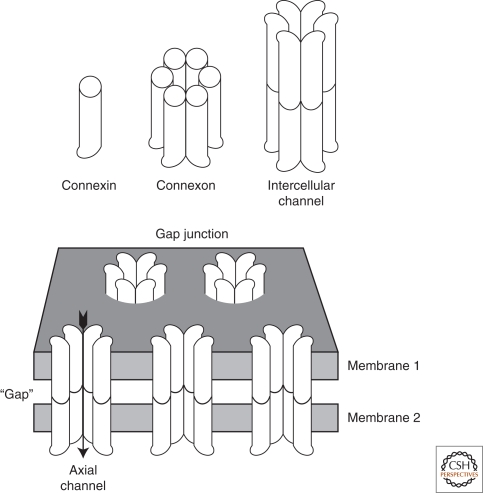How are gap junctions formed?
1 Answer
Gap junctions are aggregates of intercellular channels that permit direct cell-cell transfer of ions and small molecules.
Explanation:

( )
)
Gap junctions are formed by head to head docking of hexameric assemblies (connexons) of tetraspan integral membrane proteins, the connexins. these channels cluster into polymorphic maculae or plaques containing a few to thousands of units.
the close membrane apposition required to allow the docking between connexons sterically excludes most other membrane proteins, leaving a narrow 2nm extracellular gap after which the junction is named.
Initially described as low resistance ion pathways joining excitable cells, gap junctions are found joining virtually all cells in solid tissues. they have a wide variety of function in tissue and organ biology.

